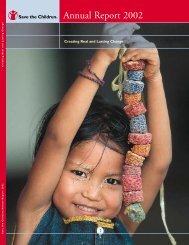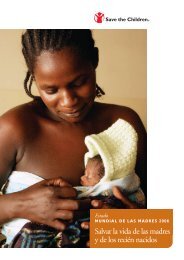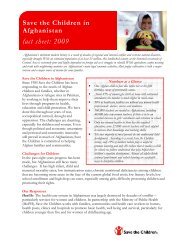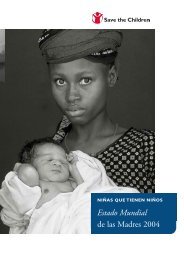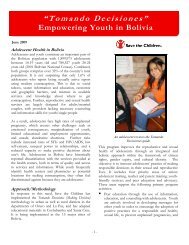Adolescent Sexual and Reproductive Health Toolkit for - UNFPA
Adolescent Sexual and Reproductive Health Toolkit for - UNFPA
Adolescent Sexual and Reproductive Health Toolkit for - UNFPA
You also want an ePaper? Increase the reach of your titles
YUMPU automatically turns print PDFs into web optimized ePapers that Google loves.
Introduction<br />
What is adolescence? Adolescence is defined as the<br />
period between 10 <strong>and</strong> 19 years of age. It is a continuum of<br />
physical, cognitive, behavioral <strong>and</strong> psychosocial change that is<br />
characterized by increasing levels of individual autonomy, a growing<br />
sense of identity <strong>and</strong> self-esteem <strong>and</strong> progressive independence<br />
from adults.<br />
<strong>Adolescent</strong>s are learning to think abstractly, which allows them to plan their futures.<br />
Experimentation <strong>and</strong> risk-taking are normal during adolescence <strong>and</strong> are part of the<br />
process of developing decision-making skills; adolescents are both positively <strong>and</strong><br />
negatively influenced by their peers, whom they respect <strong>and</strong> admire. Adults play an<br />
important role in this regard <strong>and</strong> can help adolescents weigh the consequences of<br />
their behaviors (particularly risky behaviors) <strong>and</strong> help them to identify options. The<br />
influence of at least one positive adult <strong>and</strong> a nurturing family are protective factors<br />
during this period of development <strong>and</strong> can help adolescents cope with stress <strong>and</strong><br />
develop resilience.<br />
At one end of the continuum are very young adolescents (10 to 14 years of age), who<br />
may be physically, cognitively, emotionally <strong>and</strong> behaviorally closer to children than<br />
adults. Very young adolescents are just beginning to <strong>for</strong>m their identities, which are<br />
shaped by internal <strong>and</strong> external influences. Signs of physical maturation begin to<br />
appear during this period: pubic <strong>and</strong> axillary hair appear; girls develop breast buds<br />
<strong>and</strong> may begin to menstruate; in boys, the penis <strong>and</strong> testicles grow, facial hair<br />
develops <strong>and</strong> the voice deepens. As young adolescents become aware of their<br />
sexuality, they may begin to experiment with sex. They also may experiment with<br />
substances such as alcohol, tobacco or drugs. <strong>Adolescent</strong> sexual <strong>and</strong> reproductive<br />
health (ASRH) programs should develop strategies that specifically target very young<br />
adolescents, tailoring interventions that are appropriate to their level of maturity,<br />
experience <strong>and</strong> development.<br />
Introduction<br />
5


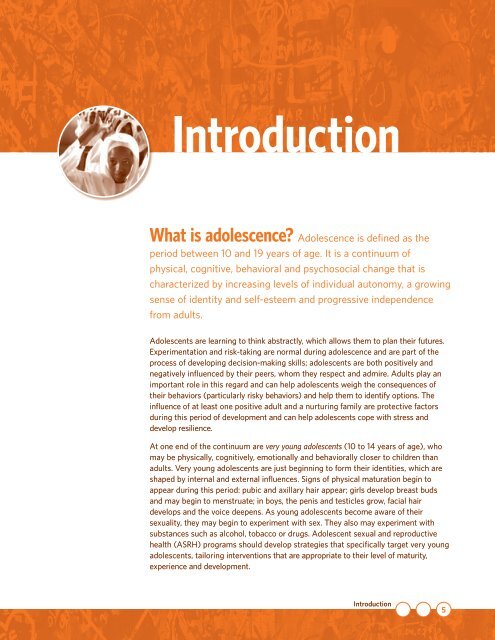

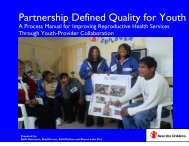

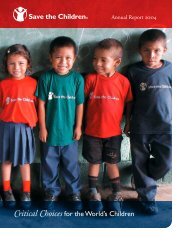
![View full document [PDF 3.39 MB] - PreventionWeb](https://img.yumpu.com/27308954/1/190x245/view-full-document-pdf-339-mb-preventionweb.jpg?quality=85)
